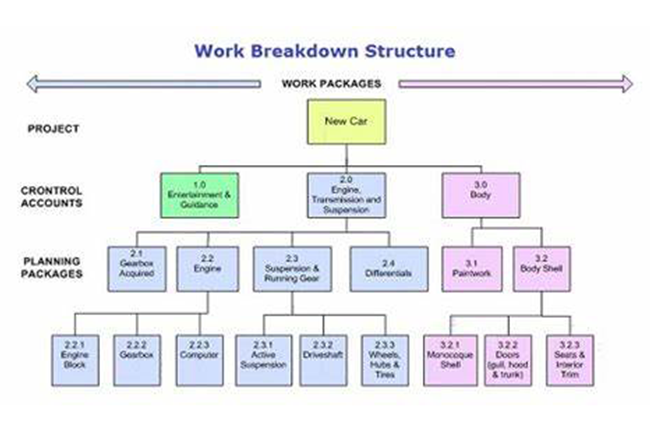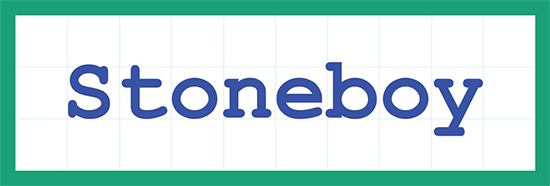
A WBS, as defined in the PMBOK® Guide — Third Edition is “a deliverable-oriented hierarchical decomposition of the work to be executed by the project team to accomplish the project objectives and create the required deliverables. It organizes and defines the total scope of the project.
Work breakdown structure keep the project organize. It is a helpful diagram for schedulers & project managers because it allows them to break down the project scope and visualize all the tasks required to complete the project. It is an essential project planning tool.
WBS defines and organizes the work a project requires. It helps to visually represent all project components: scope, stages, tasks, and deliverables required. A work breakdown structure that begins with a clear statement of work helps keep all team members focused on the end goal. .
When a project is broken down into manageable tasks or packages, it becomes a lot easier to assign these to the appropriate individual. This helps your team plan around other work that needs to be completed outside of the project.
WBS improves risk management. The WBS is performed before any work has begun to anticipate all requirements of the project. This includes resource allocation like time, budget, and equipment. In addition, the process of performing the work breakdown structure helps the team think about the areas of potential risk and account for them in the planning phase.
WBS keeps the project on schedule and within budget. A properly performed work breakdown structure is the guide to project scheduling and budgeting. Each manageable task will ideally have an associated cost, whether it’s in money or time.
4 Levels of WBS
1. The Top Level
It defines the project’s ultimate goal or the project’s final deliverable. The project’s scope should be stated using clear language, so everyone on your team understands the project’s goal.
2. Controls Account
It maps all the project’s main workflow stages and defines the goals to be achieved. In the definition of the controls in your WBS, you can list features, systems, or services that the client specifically requested.
3. Work Packages
It consist of groups of tasks that form the control accounts. Tasks should be a manageable number so project managers can coordinate to execution and monitoring.
4. Activities
It define the tasks that need to be completed to facilitate the execution of the tasks on the work packages level of the WBS. These activities are the smallest work items that contribute to a project’s completion.
Simple Guide in Creating a WBS in Any Project Type
1. Identify Project Deliverables, Project Scope, Goals & Objective of the Project
We can use the 5 stages of a project cycle the initiation, planning, execution, monitoring, and closing stages.
2. Identify Project Phases
Break the larger project scope into a series of phases that will take it from conception to completion.
3. List Subtasks & Define the Tasks
Take your phases from above and break them down into every single task and subtask that is necessary to deliver them.
4. Create Work Packages
Group those tasks and subtasks into work packages.
5. Set Start and End Dates
Once we have created tasks and subtasks we can now evaluate if this is something that is achievable.
6. Linking Dependencies
Certain tasks might be dependent on other tasks to be completed before they can begin.
7. Assign Resources and Cost Load
This is a very important step and helps you to complete the project without running out of funds near the end. With the tasks now laid out, assign them to your project team. Assign resources and costs they need to get the job done.
8. Track Status of Work Packages
Tracking is how to know if a project is performing as planned. Tracking tells us multiple things: logged hours, costs, priority, new communications, the percentage complete and how its actual progress compares to your planned progress.
Best Practices in Creating a WBS
As you’re working on your WBS it is helpful to maintain some best practices. Here are some things to keep in mind.
- 100% Rule:This rule applies to all the levels of the WBS, so the sum of the work at a lower WBS level must equal the 100% of the work represented by the WBS level above without exception.
- Use Nouns:WBS is about deliverables and the tasks that will lead to your final deliverable. Therefore, you’re dealing more on the what than the how. Verbs are great for action, and should be used in your descriptions, but for clarity, stick to nouns for each of the steps in your WBS.
- Be Thorough:For a WBS to do its job, there must be no holes. Everything is important if it’s part of the course that leads to your final deliverable. To manage that schedule, you need a complete listing of every task, big and small, that takes you there.
- Keep Tasks Mutually Exclusive:This simply means that there’s no reason to break out individual tasks for work that is already part of another task. If the work is covered in a task because it goes together with that task, then you don’t need to make it a separate task.
- Go Just Deep Enough:The WBS has to be detailed, but not so deep that it becomes confusing.
- Keeping It Simple: A WBS does not have to be intimidating to use.



0 Comments